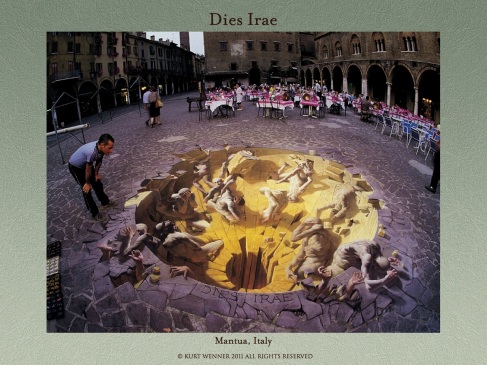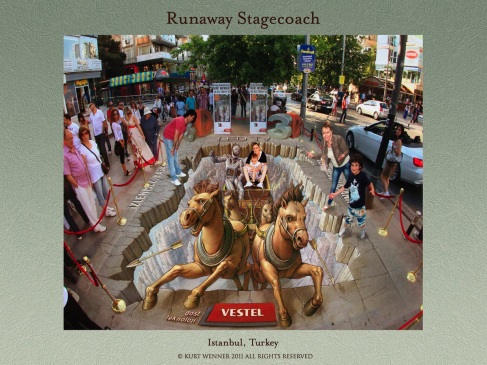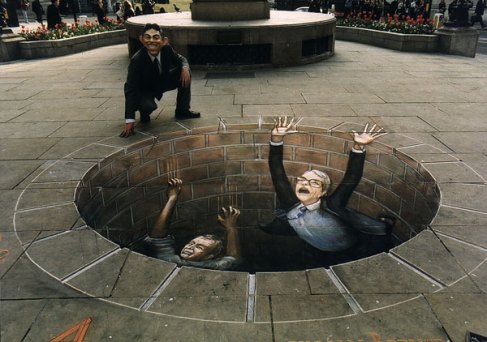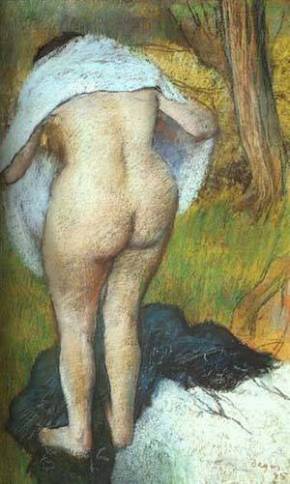A Post-Modern World
Street Art: A Virtual Exhibit
My first (and only) personal encounter with street art was in Phoenix, Arizona. My Husband and I were back home visiting family and taking the kids to different tourist attractions around town, trying to escape the dreadful heat. We were in downtown Scottsdale where I experienced the 3D chalk art, and I was instantly fascinated. Of course, the image looked entirely distorted from most every angle, but when looking through a lens perfectly positioned, the distorted figure turned into an amazing three dimensional master piece. I find inspiration in street art. Talented artists took the non-traditional art form from illegal avenues and rebellion, to beautiful commissioned paintings in urban cities across the world. The three dimensional painting are the most remarkable; it’s amazing what the human mind can create. It takes a rare and talented mind to take a little paint and street corner and produce such stunning works of art.
Edgar Müller
Edgar Müller was Mülheim, Germany in 1968. His passion for art and painting began at a young age and entered international street painting competitions when he was only 16 years old. He has traveled all over Europe and has left his mark, although temporary, in countless urban cities across Europe.
Where Do I Go
Tapic, Nayarit, Mexico
2010
What attracted me to this particular painting is its location; my Husband’s home town. We are planning to visit his family in Tapic in the next coiuple years, and I’m hoping to see this street painting in person!
Duality
Teplistan, Moscow, Russia
2010
The environmental conditions in which this painting was creating were devastating and dangerous. At the time Müller was painting this waterfall scene, which was inspired by his travels in Croatia, the area was overwhelmed by peat and forest fires, causing dangerous levels of carbon monoxide and sickening environmental conditions. Despite these conditions, Müller’s persistence and dedication held his commitment to the painting in Moscow.
Kurt Wenner
Kurt Wenner of the first of his kind; he was the creator of the hyperbolic perspective, which would reinvent and transform sidewalk art into three dimensional optical illusions. Prior to his career as a street artist, he worked for NASA as a space illustrator. He left NASA for Italy to pursue his passion in Renaissance art. This is where his foundation in Renaissance Art was formed. The majority of his work are inspired by the Renaissance era, and he used similar techniques as the artists used then, to create optical illusions.
Dies Irae
Mantua, Italy
2010
Dies Irae is a story of Judgment Day, in which the unsaved souls are cast off to hell. Wenner’s three dimensional interpretation of Dies Irae is just stunning. It seems as though these souls are being sucked into the entrance of eternal damnation.
Run Away Stagecoach
Istanbul, Turkey
This particular street painting is actually a marketing advertisement for an LED television. And after looking through numerous galleries on Kurt Wenner’s website, I noticed that he does many non-traditional commercial advertisements in the form of three dimensional street art. It’s certainly a distinctive form of marketing, but it’s unique and eye-catching and ultimately, that’s what makes an effective ad.
Julian Beever
Julian Beever was born in Cheltenham, United Kingdom in 1959. He began his career as a pavement artist long before it was popular. It wasn’t until the 1990’s that he began to explore his interest and exercise his techniques in anamorphic art. By the next decade, commercial companies commissioned his work for advertisement and marketing.
Politicians Meeting Their End
England, 1997
I love this anamorphic art, showing politicians falling into a deep, dark hole. It was completed in honor of the General Election in the UK. It is a demonstration of honesty, and it is a bold display of free speech in its statement against the corruption of government and its leaders.
Make Poverty History
Edinburgh, 2010
This anamorphic illusion was commissioned by a local news station in Edinburgh, UK, in support of the G8 Campaign; a movement to stop global poverty and hunger, and to improve the quality of life.











